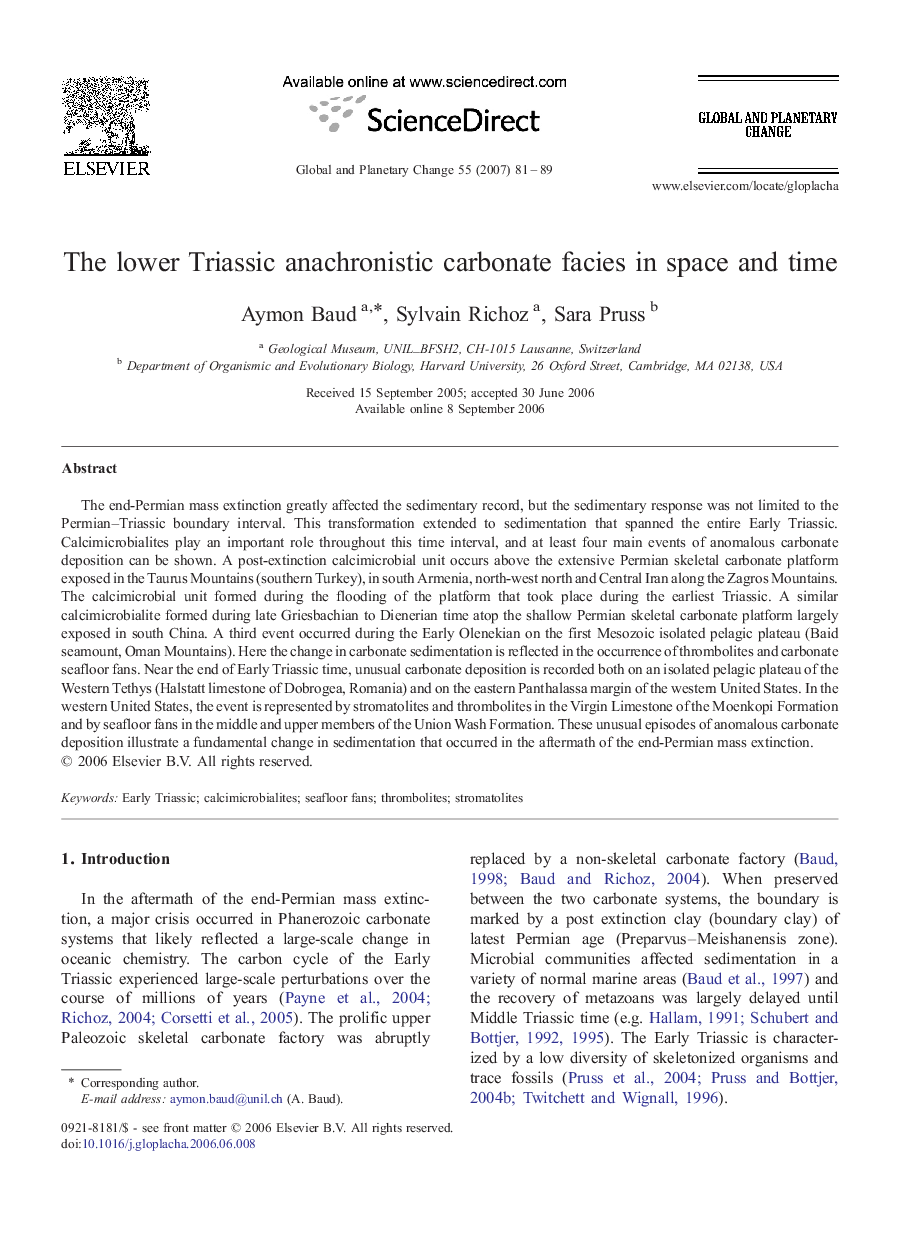| Article ID | Journal | Published Year | Pages | File Type |
|---|---|---|---|---|
| 4464417 | Global and Planetary Change | 2007 | 9 Pages |
The end-Permian mass extinction greatly affected the sedimentary record, but the sedimentary response was not limited to the Permian–Triassic boundary interval. This transformation extended to sedimentation that spanned the entire Early Triassic. Calcimicrobialites play an important role throughout this time interval, and at least four main events of anomalous carbonate deposition can be shown. A post-extinction calcimicrobial unit occurs above the extensive Permian skeletal carbonate platform exposed in the Taurus Mountains (southern Turkey), in south Armenia, north-west north and Central Iran along the Zagros Mountains. The calcimicrobial unit formed during the flooding of the platform that took place during the earliest Triassic. A similar calcimicrobialite formed during late Griesbachian to Dienerian time atop the shallow Permian skeletal carbonate platform largely exposed in south China. A third event occurred during the Early Olenekian on the first Mesozoic isolated pelagic plateau (Baid seamount, Oman Mountains). Here the change in carbonate sedimentation is reflected in the occurrence of thrombolites and carbonate seafloor fans. Near the end of Early Triassic time, unusual carbonate deposition is recorded both on an isolated pelagic plateau of the Western Tethys (Halstatt limestone of Dobrogea, Romania) and on the eastern Panthalassa margin of the western United States. In the western United States, the event is represented by stromatolites and thrombolites in the Virgin Limestone of the Moenkopi Formation and by seafloor fans in the middle and upper members of the Union Wash Formation. These unusual episodes of anomalous carbonate deposition illustrate a fundamental change in sedimentation that occurred in the aftermath of the end-Permian mass extinction.
